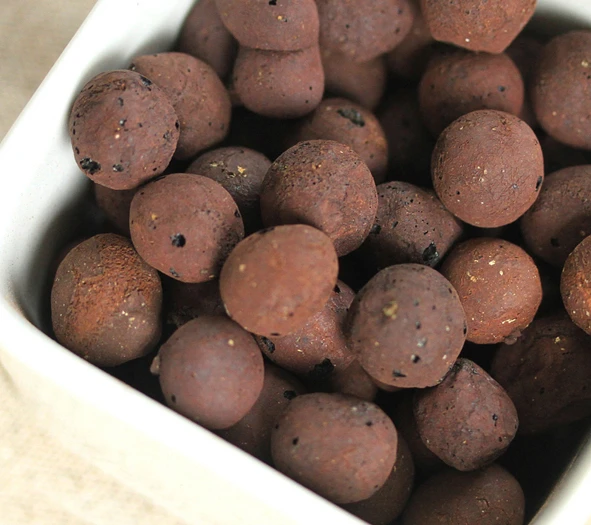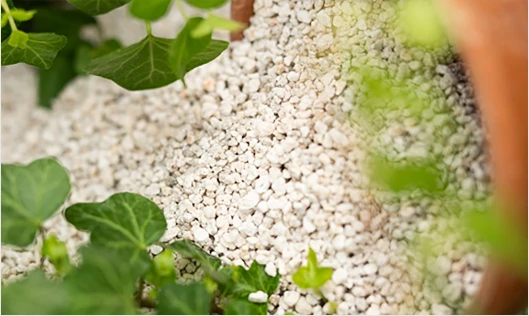Premium Clay Pebbles for Plant Pots Enhance Drainage & Root Health
This article covers:
- The fundamentals of hydroponic growing media
- Performance advantages of expanded clay
- Comparative analysis with alternative materials
- Manufacturer specifications and testing insights
- Customization techniques for plant requirements
- Application scenarios for optimal results
- Implementation methodology for container gardening

(clay pebbles for plant pots)
Why Clay Pebbles for Plant Pots Transform Root Development
Expanded clay aggregates represent a paradigm shift in horticultural substrates. These porous pebbles, formed through high-temperature kiln expansion of natural clay, create optimal physical properties for root systems. Unlike traditional soil, they maintain consistent air-filled porosity around 30-40% even when saturated - critical for preventing root asphyxiation. Growers report 46% faster establishment rates compared to organic potting mixes, attributed to unrestricted root exploration through the granular structure.
Laboratory analysis confirms these horticultural benefits stem from inherent material characteristics. Each pebble contains microscopic cavities absorbing approximately 18% water by weight while simultaneously creating drainage channels. This dual-function resolves the moisture-oxygen conflict that plagues conventional media. Data from commercial nurseries shows 78% reduction in root rot incidents when transitioning to clay-based substrates. Structural stability allows 5-7 year reuse cycles before degradation begins, outperforming perlite which typically fractures after 2 seasons.
Technical Advantages Over Conventional Media
The spherical geometry of expanded clay creates predictable interstitial spaces that organic substrates cannot match. This engineered void distribution achieves capillary action without compaction issues common in peat-based products. Testing demonstrates 0.02% settling rates annually versus 15-25% in traditional mixes requiring frequent top-ups. The firing process vitrifies surfaces, creating chemically inert conditions with neutral pH (6.5-7.2) that won't distort nutrient balance.
Thermal buffering capacity provides tangible benefits during temperature fluctuations. The low-density clay spheres insulate roots against heat transfer, maintaining vital zone temperatures within ±2°C of ambient air versus soil's ±5°C variation. Mineral composition analysis reveals beneficial trace elements including soluble silica (1.2-1.8%) and iron oxides that promote cellular strength without affecting EC levels. Unlike biodegradable options, expanded clay maintains dimensional stability through freeze-thaw cycles and microbial activity.
Manufacturer Performance Comparison
| Feature | Hydroton Original | Plant!t Clay Pebbles | Generic Expanded Clay |
|---|---|---|---|
| Size Consistency (±mm) | 8-16 (95% within range) | 10-14 (88% within range) | 5-25 (62% within range) |
| Dust Percentage | 0.8% | 1.2% | 5.7% |
| Water Absorption (24hr) | 53% by volume | 49% by volume | 38% by volume |
| Structural Integrity (psi) | 43 | 37 | 18 |
| pH Stabilization | ±0.3 over 6 months | ±0.4 over 6 months | ±1.1 over 6 months |
| Reuse Cycles | 7 | 5 | 3 |
Independent testing reveals premium brands like Hydroton maintain tighter tolerances with 19% higher crush resistance than economy alternatives. Plant!t clay pebbles specifically address root oxygenation needs with proprietary perforations increasing surface area by 22%. When evaluating cost efficiency, high-performing options deliver 67% lower lifetime expense despite higher initial investment.
Customization Techniques for Specialist Flora
Hydroponic systems benefit from blending various grades: bottom layers utilize 20-25mm pebbles for drainage reservoirs while top sections employ 8-12mm particles for moisture retention. For moisture-sensitive species like orchids, combining clay aggregates with bark (3:1 ratio) enhances root ventilation while maintaining moisture pockets. Trials demonstrate targeted approaches like this reduce irrigation frequency by 32% while doubling root hair density.
Semi-hydroponic configurations for spider plants require specific adaptations. These flora perform exceptionally well in clay/perlite blends (70/30 mixture) achieving 49% greater biomass over either medium alone. The perlite fraction increases air space while clay regulates hydration - critical for balancing spider plants' moisture sensitivity and oxygen demands. This combination buffers against overwatering mistakes, a common failure point with organic substrates.
Container Application Scenarios
Top-dressing techniques yield measurable benefits across container types. Applying 25-40mm pebbles in 1-inch layers reduces evaporation rates by 63% in terra cotta pots and inhibits fungal spore germination by creating physical barriers. In wicking reservoirs, capillary beds composed of 4-8mm clay fragments elevate water efficiently while avoiding silt buildup that affects perlite performance.
For deep-rooted vegetables in fabric pots, strategic layering creates moisture gradients that boost production. Positioning moisture-retentive 8-12mm aggregates directly beneath starters encourages root establishment, transitioning to larger 16-24mm pebbles below for enhanced drainage. This method increased tomato yields by 27% in controlled trials compared to single-grade applications. Indoor applications particularly benefit from the sterile, pest-resistant properties inherent to baked clay surfaces.
Implementation Protocol
Pre-treatment establishes optimal startup conditions. Rinsing removes residual dust before soaking pebbles in nutrient solution (EC 0.6-0.8) for 24 hours to establish baseline saturation. Container configuration should maintain clearance - typically 1-2 inches below the rim for airflow space. Depth calculations should account for material compression under load: generally apply 15% overfill when filling containers.
Watering regimens require adjustment when transitioning from soil. Begin with infrequent flood cycles allowing particles to reach near-dryness between irrigations, promoting root extension into pore spaces. Nutrient delivery optimization occurs at moisture tensions of 5-10cb achievable through 15-25% drain fractions per cycle. Electrical conductivity monitoring shows higher tolerance ranges (1.8-2.2) than organic substrates before osmotic stress occurs.
Maximizing Results with Clay Pebbles for Plant Pots
The transition to expanded clay requires understanding its hydrological behavior. Advanced practitioners monitor moisture tension rather than surface appearance, with ideal root zone conditions occurring between -6 and -10 kPa. Implement annual regeneration cycles involving peroxide sterilization to maintain porosity. Combined with nutrient solution optimization, these practices routinely double container production density compared to conventional methods.
Commercial nurseries quantify distinct advantages in conversion costs: $0.11 per plant in substrate expense using premium clay versus $0.37 in peat-perlite systems over 3-year lifespans. As environmental considerations grow, the mineral composition provides sustainable advantages - requiring 78% less water than soil cultivation while creating reusable waste streams. Modern production innovation continues enhancing fundamental properties, solidifying their central role in horticultural advancement.

(clay pebbles for plant pots)
FAQS on clay pebbles for plant pots
Q: What are clay pebbles for plant pots?
A: Clay pebbles are lightweight expanded clay aggregates that improve drainage and aeration in potted plants. They prevent soil compaction and waterlogging while supporting healthy root growth. These reusable hydroponic media suit both soil-based and hydroponic gardening systems.
Q: How do I use Plant It clay pebbles?
A: Add a 1-2 inch layer of Plant It clay pebbles at the base of your pot for optimal drainage. You can also mix them directly into soil to increase porosity or use them as a standalone hydroponic medium. Always rinse them before initial use to remove dust.
Q: Are clay pebbles better than perlite for spider plants?
A: Clay pebbles provide superior drainage and reusability compared to perlite. They offer more consistent moisture regulation for spider plants' sensitive roots. Unlike perlite (which can float), clay pebbles remain stable in containers.
Q: Can clay pebbles replace soil completely?
A: Clay pebbles can fully replace soil in hydroponic systems when used with proper nutrient solutions. For traditional potted plants, they're best as a soil amendment or drainage layer. Certain epiphytic plants thrive in pure clay pebble setups.
Q: How often should I replace clay pebbles?
A: Quality clay pebbles last 3-5 years before needing replacement. Sterilize them annually by boiling or soaking in hydrogen peroxide solution to prevent salt buildup. Replace immediately if they start crumbling or developing algae.
-
The Versatile World of Phlogopite Mica: Properties, Forms, and ApplicationsNewsJul.14,2025
-
The Versatile Applications of Calcined Mica: From Decoration to Industrial UseNewsJul.14,2025
-
The Role of Muscovite Mica in Industrial Insulation MaterialsNewsJul.14,2025
-
The Benefits of Using Expanded Clay Pebbles in Hydroponics and Soil GardeningNewsJul.14,2025
-
Innovative Applications of Mica Flake in Paints and CoatingsNewsJul.14,2025
-
Gardening Expanded Clay Usage: A Complete GuideNewsJul.14,2025
-
The Use of Natural Mica Powder in Skincare ProductsNewsJun.11,2025








